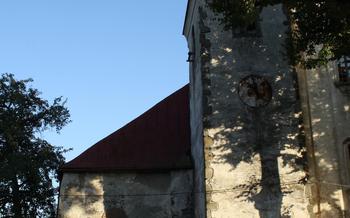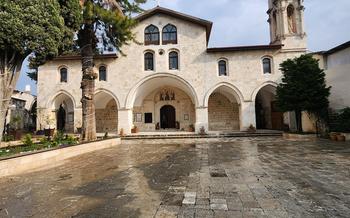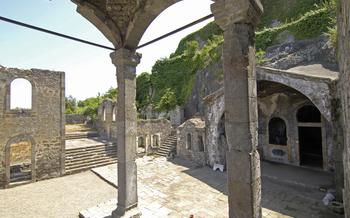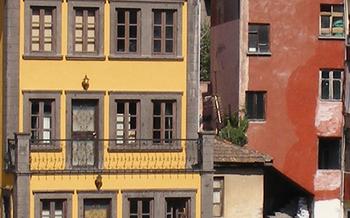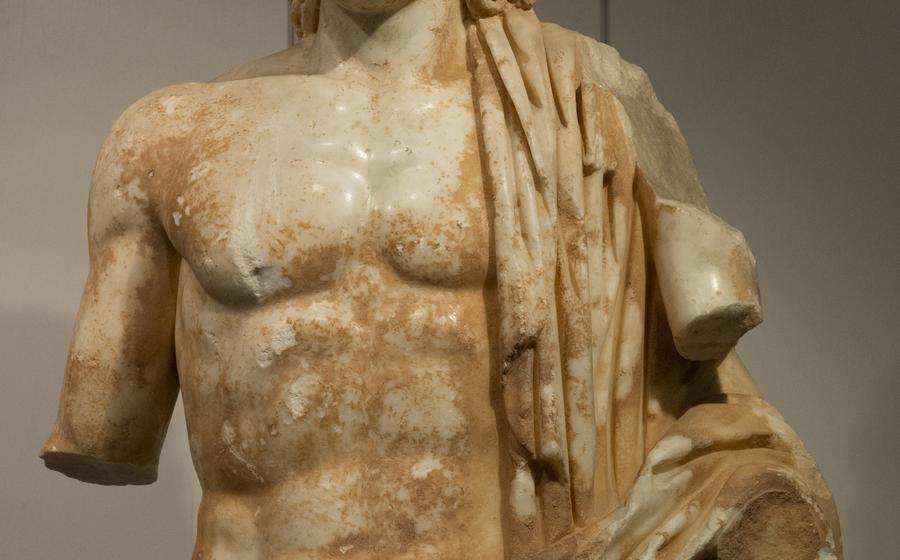
Aya Stefanos Church (Saint Stephen Church)
- Aya Stefanos Church (Saint Stephen Church): A Historical Gem
- Location and Accessibility:
- Visiting Hours and Admission
- Exploring the Church's Interior
- Symbolism and Iconography
- Adjoining Monastery and Gardens
- Panoramic Views from the Bell Tower
- Historical Context and Significance
- Local Traditions and Festivals
- Nearby Attractions and Activities
- Pilgrimage and Religious Significance
- Preservation Efforts and Challenges
- Photography and Videography Guidelines
- Local Cuisine and Dining Options
- Insider Tip: Hidden Gem and Secret Spot
Aya Stefanos Church (Saint Stephen Church): A Historical Gem
A testament to the rich cultural heritage of Isparta, Aya Stefanos Church, also known as Saint Stephen Church, stands as a symbol of historical significance. Built approximately in the 13th century, the church is believed to be one of the oldest Greek Orthodox churches in the region. Its history is steeped in the religious and cultural tapestry of Isparta, serving as a place of worship, sanctuary, and community gathering for centuries.
The church's architectural features are a blend of Byzantine and local influences, showcasing intricate carvings, beautiful frescoes, and stunning mosaics that adorn its walls and ceilings. These artistic masterpieces depict biblical scenes, historical events, and religious figures, offering a glimpse into the rich iconography and symbolism of the church.
Aya Stefanos Church holds significant religious and cultural importance for the Greek Orthodox community in Isparta. Over the centuries, it has served as a spiritual center for Orthodox Christians, attracting pilgrims and visitors from far and wide. Its enduring legacy as a place of worship and devotion makes it a cherished landmark for the local community.
This magnificent church stands as a symbol of coexistence and tolerance in Isparta. Throughout history, the church has been a place where people of different faiths have come together to celebrate their shared heritage and respect for religious diversity. Aya Stefanos Church remains a testament to the power of faith and the enduring spirit of religious harmony.
Location and Accessibility:
The Aya Stefanos Church is situated in the heart of Isparta, amidst a vibrant tapestry of history and culture. Its exact address is Kilise Mahallesi, Aya Stefanos Εκκλησiας Caddesi, 32100 Isparta Merkez/Isparta. To simplify navigation, you can utilize the GPS coordinates: 3751259, 30.56493
Reaching the church is a breeze, with multiple transportation options available. For those arriving by car, ample parking spaces are provided in the vicinity, ensuring a hassle-free visit. If you prefer public transportation, the church is conveniently accessible by local buses, which frequently ply the routes. Simply hop on a bus bound for the city center and alight at the Aya Stefanos stop.
Once you arrive in the picturesque neighborhood surrounding the church, take a moment to soak in the charm of its narrow cobblestone streets and traditional Ottoman-era houses. The atmosphere is palpable, with the scent of freshly baked pastries wafting from nearby bakeries and the cheerful chatter of locals filling the air.
Visiting Hours and Admission
Visiting the Aya Stefanos Church is a rewarding experience that offers travelers a glimpse into its rich history and cultural significance. The church welcomes visitors throughout the week, with specific hours designated for public access. During the summer months, typically from April to October, the church is open from 9:00 AM to 7:00 PM, allowing ample time for exploration and contemplation. In the winter season, from November to March, the hours may be slightly shorter, usually from 10:00 AM to 5:00 PM, due to reduced daylight.
Admission to the Aya Stefanos Church is free of charge, making it accessible to all visitors. This open-door policy encourages individuals from various backgrounds and beliefs to appreciate the church's beauty and historical significance. Whether you are a history buff, a religious pilgrim, or simply an admirer of architecture, the Aya Stefanos Church welcomes you with open arms.
Exploring the Church's Interior
Stepping inside Aya Stefanos Church is like stepping back in time. The interior is a testament to the artistry and devotion of the builders who created this sacred space. The walls are adorned with stunning frescoes and mosaics that depict scenes from the Bible and the lives of the saints. The intricate carvings and decorative elements add to the awe-inspiring atmosphere of the church.
The nave, the central part of the church, is dominated by a large dome that rises high above. The dome is decorated with a beautiful mosaic of Christ Pantocrator, surrounded by angels and saints. The apse, the eastern part of the church, is home to the altar, which is adorned with intricate carvings and inlaid with precious stones.
The side chapels, located on either side of the nave, are dedicated to different saints. Each chapel has its own unique iconography and artwork, reflecting the diverse cultural and religious influences that have shaped the history of this church.
Visitors are encouraged to take their time to explore the interior of Aya Stefanos Church and appreciate the beauty and craftsmanship that went into its creation.
Symbolism and Iconography
The Aya Stefanos Church is adorned with a wealth of symbolism and iconography, reflecting its deep religious and cultural significance. The interior walls are covered in stunning frescoes and mosaics, each telling a story or conveying a message. The intricate carvings and decorative elements add to the church's visual appeal, creating a harmonious blend of art and spirituality.
The nave, apse, and side chapels are adorned with various symbols and motifs. The nave, the central part of the church, features depictions of biblical scenes and stories from the life of Saint Stephen, the church's namesake. The apse, the semi-circular area behind the altar, often contains representations of the Virgin Mary, Jesus Christ, and other saints. The side chapels, dedicated to specific saints or events, showcase unique iconography related to their respective themes.
The iconography within the church draws upon both Christian and local cultural influences. The images of saints, angels, and biblical figures are portrayed in a traditional Byzantine style, reflecting the church's deep roots in Eastern Christianity. At the same time, the incorporation of local motifs and symbols, such as flowers, plants, and animals, adds a distinctly Anatolian touch to the artwork.
By deciphering the symbolism and iconography of the Aya Stefanos Church, visitors can gain a deeper understanding of the church's history, religious significance, and cultural context. Each image, symbol, and motif holds a story, inviting visitors to explore the rich tapestry of faith and heritage that this remarkable church represents.
Adjoining Monastery and Gardens
Surrounding the Aya Stefanos Church are the remnants of a once-thriving monastery, adding to the site's historical allure. Though time has weathered these structures, their presence evokes a sense of tranquility and contemplation. While the monastery's grandeur may have faded, its spirit lingers in the surrounding gardens.
The church's gardens offer a peaceful retreat, inviting visitors to stroll amidst vibrant flora and bask in the serenity of nature. The meticulously landscaped paths lead through a tapestry of fragrant flowers, lush greenery, and ancient trees. Each step reveals a new perspective, a hidden corner, or a secluded bench perfect for quiet reflection.
In the heart of the gardens, a fountain gently cascades, its soothing melody adding to the tranquil ambiance. The air is filled with the sweet scent of jasmine and the cheerful songs of birds, creating a symphony of nature that lulls visitors into a state of tranquility.
Whether seeking a moment of respite or a deeper connection with the site's spiritual essence, the gardens surrounding the Aya Stefanos Church provide a sanctuary for contemplation and rejuvenation.
Panoramic Views from the Bell Tower
If permitted, ascending the bell tower of Aya Stefanos Church offers a remarkable opportunity to witness breathtaking panoramic vistas of Isparta and its surrounding landscapes. The elevated vantage point provides a unique perspective, allowing visitors to admire the city's sprawling urban tapestry, dotted with historical landmarks and modern structures. The surrounding countryside unfolds before the eyes, revealing lush green valleys, rolling hills, and distant mountain ranges.
The panoramic views from the bell tower are a true feast for the senses, inviting visitors to capture the essence of Isparta's natural beauty. With a camera in hand, photographers can immortalize the picturesque landscapes, capturing the play of light and shadow as it dances across the terrain. Whether you're an avid shutterbug or simply seeking a moment of tranquility and inspiration, the bell tower of Aya Stefanos Church offers an unforgettable experience that will leave you with lasting memories.
Historical Context and Significance
Aya Stefanos Church stands as a testament to Isparta's rich and diverse history. In the past, the church played a pivotal role in the city's religious landscape, serving as a place of worship and spiritual guidance for the local Christian community. Its existence symbolizes the religious tolerance and coexistence that characterized Isparta throughout history.
The church's historical significance extends beyond its religious function. It represents a tangible link to the city's past, embodying the architectural and artistic traditions of its time. The intricate frescoes, carvings, and iconography within the church offer valuable insights into the cultural and artistic heritage of the region. Aya Stefanos Church stands as a symbol of continuity, connecting Isparta's past with its present.
Furthermore, the church holds religious significance for various communities. It is a cherished pilgrimage site for Christians from near and far, who visit to pay homage to Saint Stephen and seek spiritual guidance. The church's enduring importance as a place of worship underscores its profound impact on the religious and cultural fabric of Isparta.
Local Traditions and Festivals
Throughout history, the Aya Stefanos Church has been an integral part of the local community in Isparta. Various religious festivals and celebrations are associated with the church, showcasing the rich cultural heritage of the region. One of the most significant events is the annual feast day of Saint Stephen, the church's patron saint. During this festival, the church is adorned with colorful decorations, and special religious services are held to honor the saint. Local residents and pilgrims from neighboring areas gather to participate in the festivities, creating a vibrant and joyous atmosphere.
Additionally, the church has played a pivotal role in shaping local traditions and customs. For centuries, it has served as a gathering place for the community, where people come together for weddings, baptisms, and other important life events. The church's serene gardens are often used for social gatherings, picnics, and community events, fostering a sense of unity and belonging among the locals.
Visiting the Aya Stefanos Church during a religious festival or local event allows travelers to immerse themselves in the cultural tapestry of Isparta. It provides an opportunity to witness the deep-rooted traditions and customs that have been passed down through generations, offering a glimpse into the vibrant cultural heritage of this historic city.
Nearby Attractions and Activities
Aya Stefanos Church is situated in the heart of Isparta, amidst a wealth of historical sites, cultural experiences, and natural wonders. Embrace the opportunity to explore the city's rich tapestry of attractions beyond the church's walls.
Within easy reach, discover the Isparta Museum, housing a fascinating collection of artifacts that narrate the region's captivating history. Delve into the intricate world of carpets at the Isparta Carpet Museum, renowned for its exquisite displays of traditional craftsmanship.
For a taste of local life, immerse yourself in the vibrant atmosphere of the Isparta Bazaar, a bustling marketplace where you can haggle for unique souvenirs and savor the aromas of Turkish delights.
Nature enthusiasts will find solace in the tranquil embrace of Lake Eğirdir, a picturesque haven just a short drive away. Embark on a scenic boat tour, marvel at the diverse birdlife, or simply relax on the shores, soaking in the serenity of the surroundings.
Venture further afield to explore the natural wonders of the region. Hike through the enchanting forests of Davraz Mountain, where towering trees, cascading waterfalls, and panoramic vistas await. Marvel at the awe-inspiring spectacle of Eğirdir Red Cliffs, a geological wonder that paints a vibrant canvas against the backdrop of the turquoise lake.
Isparta offers a harmonious blend of history, culture, and nature. Embrace the chance to delve deeper into the region's treasures, creating a well-rounded travel experience that will leave you with lasting memories.
Pilgrimage and Religious Significance
Aya Stefanos Church holds immense religious significance and serves as a pivotal pilgrimage site for individuals seeking spiritual connection and enlightenment. Throughout history, pilgrims from diverse backgrounds have embarked on journeys to visit this revered edifice, guided by their faith and a profound desire for spiritual fulfillment.
For Christians, the church represents a sacred space where they can connect with their religious heritage, offer prayers, and seek divine guidance. The church's intricate iconography, depicting biblical scenes and figures, provides a visual narrative that inspires contemplation and devotion. Pilgrims often light candles, engage in prayerful meditation, and participate in religious rituals within the church's hallowed walls.
Beyond its Christian significance, Aya Stefanos Church also holds cultural and historical importance for other religious communities in the region. It serves as a symbol of coexistence and tolerance, a testament to the diverse religious traditions that have flourished in Isparta throughout the centuries. The church's architectural features, blending elements from different cultures and periods, reflect this rich tapestry of religious influences.
For many visitors, the experience of visiting Aya Stefanos Church is deeply personal and transformative. The church's serene atmosphere, coupled with its historical and spiritual significance, creates an environment conducive to contemplation and spiritual growth. Whether seeking solace, guidance, or a deeper connection with their faith, pilgrims find solace and inspiration within the walls of this sacred sanctuary.
Preservation Efforts and Challenges
The Aya Stefanos Church has undergone several restoration and conservation efforts throughout its existence. In recent years, significant work has been undertaken to preserve its architectural integrity and historical value. Skilled artisans and experts have painstakingly restored the frescoes, mosaics, and intricate carvings, ensuring that the church's artistic heritage remains intact for future generations.
Despite these efforts, the church faces several challenges in preserving its heritage. The passage of time, environmental factors, and the sheer number of visitors can take a toll on the delicate structures and artwork. Balancing the need for preservation with the desire to make the church accessible to the public requires careful planning and resource allocation.
Raising awareness about the importance of preserving the church's cultural heritage is also crucial. By educating visitors and the local community about the historical and religious significance of the site, a sense of shared responsibility can be fostered, encouraging everyone to contribute to its protection.
Photography and Videography Guidelines
When visiting Aya Stefanos Church, it is important to be respectful of the sacred nature of the site. Photography and videography are generally permitted, but visitors should be mindful of the following guidelines:
-
Respectful Photography: Avoid using flash photography, as it can be disruptive to other visitors and can damage the artwork. Use natural light or low-light settings to capture the beauty of the church's interior.
-
Designated Areas: While photography is generally allowed, certain areas of the church may be restricted for photography or videography. Please adhere to any signs or instructions from the church staff.
-
No Intrusion: Refrain from using tripods or other equipment that may obstruct the paths or disturb other visitors. Be mindful of your surroundings and avoid blocking the views of others.
-
Capturing the Essence: Focus on capturing the unique features and details of the church, such as the intricate frescoes, mosaics, and architectural elements. Experiment with different angles and perspectives to create visually stunning images.
-
Preservation in Mind: Remember that the church is a historical and cultural treasure. Avoid touching or leaning against the artwork or any delicate surfaces. Be mindful of your impact on the site and prioritize preservation.
-
Seek Permission: If you plan to use your photos or videos for commercial purposes, it is advisable to seek permission from the church authorities. This ensures that you are respecting the copyrights and intellectual property rights associated with the site.
Local Cuisine and Dining Options
Isparta offers a tantalizing array of culinary delights that reflect its rich cultural heritage. The city is renowned for its fresh, seasonal produce, aromatic spices, and traditional cooking methods. To truly immerse yourself in the local gastronomy, venture beyond the immediate vicinity of Aya Stefanos Church and explore the surrounding streets and eateries.
For an authentic Turkish breakfast experience, head to one of the many "kahvaltıcı" (breakfast shops). Indulge in a lavish spread of cheeses, olives, honey, jams, and freshly baked bread. Don't miss the chance to savor "Isparta Gülü Reçeli," a unique rose petal jam that is a local specialty.
Lunchtime beckons with an array of tempting options. Sample "Isparta Köfte," succulent meatballs served with a tangy tomato sauce and grilled vegetables. Or, opt for "Isparta Tandır," a slow-cooked lamb dish that is sure to tantalize your taste buds.
As the sun sets, the city comes alive with the aromas of dinner being prepared in homes and restaurants. Try "Isparta Mantı," delicate dumplings filled with ground lamb or beef, topped with yogurt and a spicy tomato sauce. For a hearty and flavorful meal, order "Isparta Kebabı," skewers of grilled meat served with rice and salad.
Vegetarians will find plenty of options to satisfy their cravings. "Isparta Zeytinyağlı Yaprak Sarma," grape leaves stuffed with rice, herbs, and spices, is a must-try dish. Another local favorite is "Isparta Patlıcan Musakka," a hearty casserole made with eggplant, potatoes, and tomatoes.
Before you depart, make sure to sample Isparta's famous "Gül Lokumu," a Turkish delight flavored with rose water. These sweet treats are the perfect way to end your culinary journey in this captivating city.
Insider Tip: Hidden Gem and Secret Spot
Beyond the main attractions of Aya Stefanos Church, there lies a hidden gem waiting to be discovered. Tucked away in a secluded corner of the church, visitors can find a small, unassuming chapel known as the "Secret Chapel." This hidden sanctuary is adorned with exquisite frescoes and intricate carvings, offering a glimpse into the church's rich history. The chapel provides a unique perspective on the artistry and devotion that went into the construction of Aya Stefanos.
For photography enthusiasts, the Secret Chapel presents an exceptional opportunity to capture stunning images. The soft light filtering through the stained-glass windows illuminates the chapel's interior, creating a magical atmosphere. The intricate details of the frescoes and carvings come alive in the camera lens, revealing the hidden beauty of this sacred space.
To avoid the crowds and find tranquility, consider visiting the church during the early morning hours or on weekdays. This will allow you to fully appreciate the serenity of the surroundings and capture the essence of Aya Stefanos Church without distractions. Embrace the opportunity to explore this hidden gem and discover the secrets that lie within its walls.
